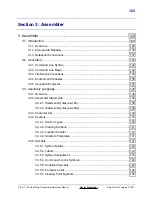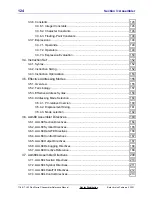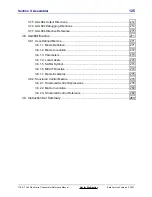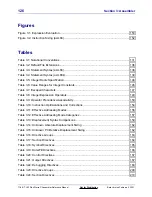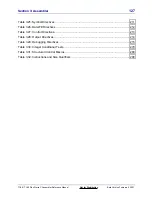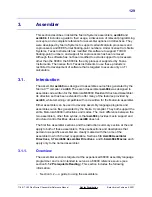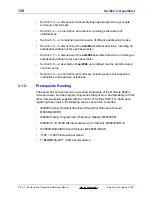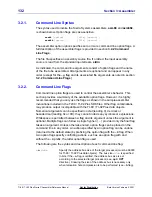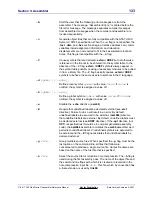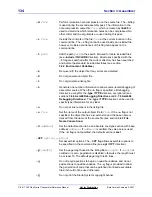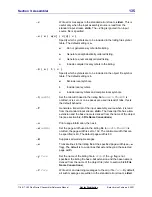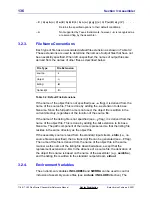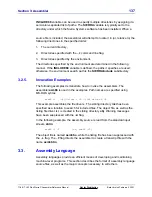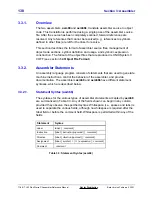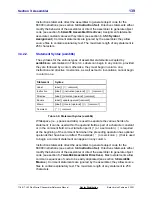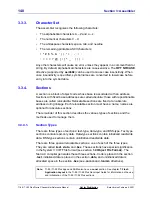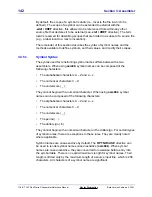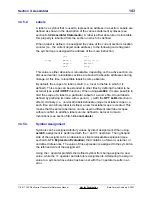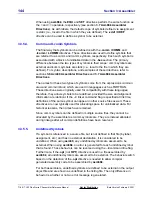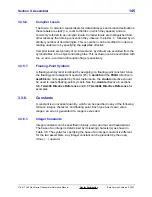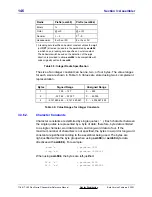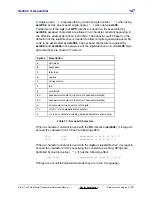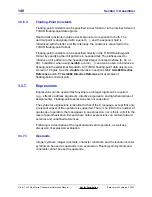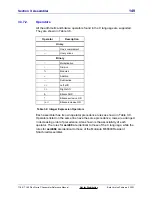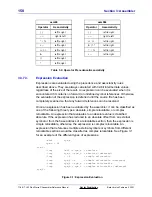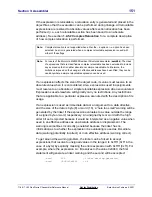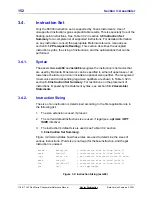
Section 3: Assembler
137
TI
-
89 / TI
-
92 Plus Sierra C Assembler Reference Manual
Not for Distribution
Beta Version February 2, 2001
INCLUDE68 variable can be used to specify multiple directories by assigning it a
semicolon-separated list of paths. The SIERRA variable is typically set to the
directory under which the Sierra Systems software has been installed. When a
source file is included, the assembler will attempt to locate it in (or, relative to) the
following directories in the specified order:
1. The current directory.
2. Directories specified with the
-I
command line flag.
3. Directories specified by the environment.
The directories specified by the environment are determined in the following
manner. If the INCLUDE68 variable is defined, the paths it specifies are used;
otherwise, the environment search path is the SIERRA\include subdirectory.
3.2.5. Invocation
Examples
The following examples demonstrate how to invoke the assemblers. The
assembler asm68 is used in the examples. Path names are specified using
MS-DOS syntax.
asm68 -o ..\obj\driver.o -I..\incl driver.s -W
This example assembles the file driver.s. The sibling directory incl has been
specified as a location to search for included files. The object file, as well as the
listing file driver.lst, is created in the sibling directory obj. Warning messages
have been suppressed with the
-W
flag.
In the following example, the assembly source is read from the standard input
stream, stdin:
asm68 -l -T
(or, asm68 -lT)
The object file is named asm68.o, while the listing file has been suppressed with
the
-l
flag. The
-T
flag directs the assembler to create a transcript file with the
name asm68.trn.
3.3. Assembly
Language
Assembly languages provide an efficient means of developing and maintaining
machine-level programs. This section describes the format of assembly language
source files, as well as the major concepts necessary to write them.

